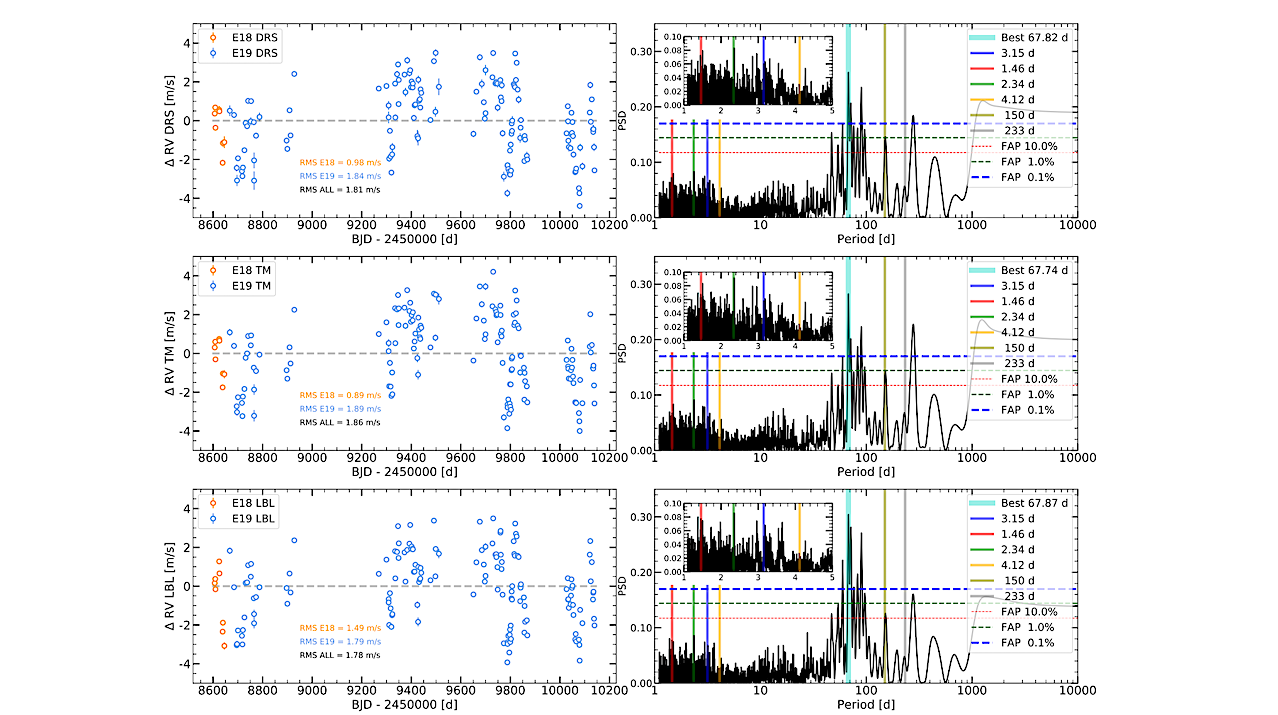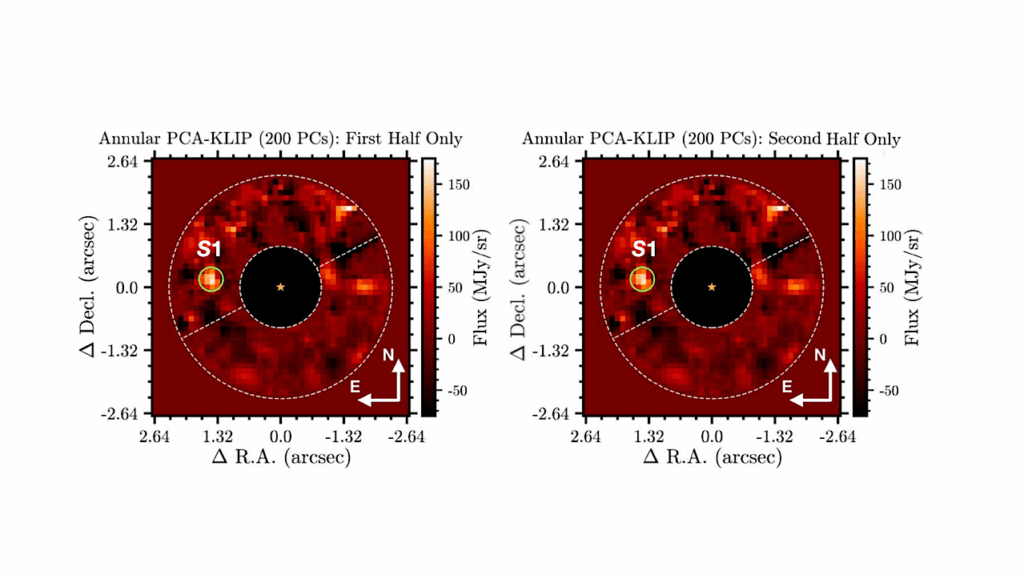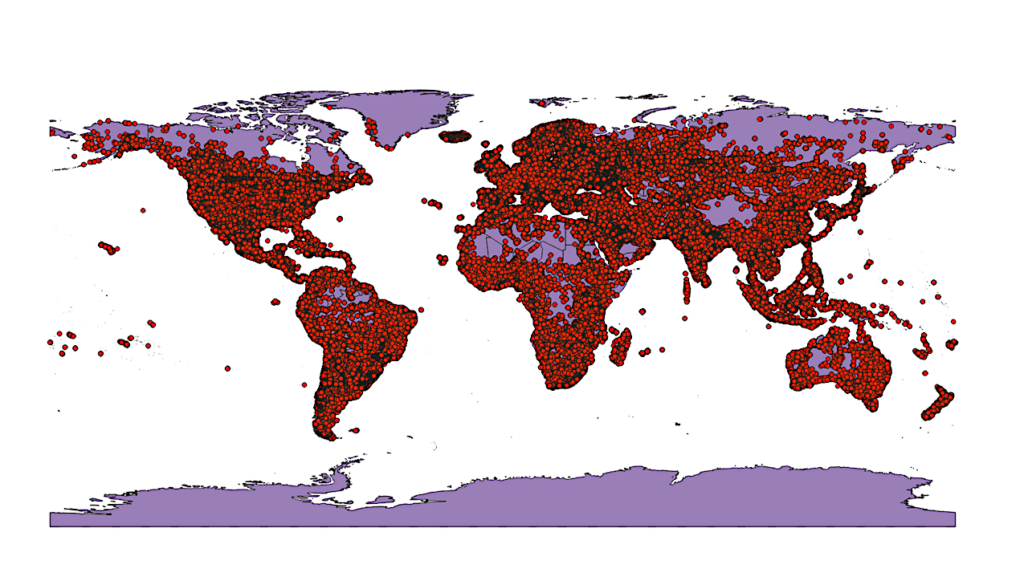A Sub-Earth-mass Planet Orbiting Barnard’s Star

Barnard’s star is a primary target within the ESPRESSO guaranteed time observations (GTO) as it is the second closest neighbour to our Sun after the α Centauri stellar system.
We present here a large set of 156 ESPRESSO observations of Barnard’s star carried out over four years with the goal of exploring periods of shorter than 50 days, thus including the habitable zone (HZ). Our analysis of ESPRESSO data using Gaussian process (GP) to model stellar activity suggests a long-term activity cycle at 3200d and confirms stellar activity due to rotation at 140d as the dominant source of radial velocity (RV) variations.
These results are in agreement with findings based on publicly available HARPS, HARPS-N, and CARMENES data. ESPRESSO RVs do not support the existence of the previously reported candidate planet at 233d. After subtracting the GP model, ESPRESSO RVs reveal several short-period candidate planet signals at periods of 3.15d, 4.12d, 2.34d, and 6.74d.
We confirm the 3.15d signal as a sub-Earth mass planet, with a semi-amplitude of 55±7cm/s, leading to a planet minimum mass mpsini of 0.37±0.05Mearth, which is about three times the mass of Mars. ESPRESSO RVs suggest the possible existence of a candidate system with four sub-Earth mass planets in circular orbits with semi-amplitudes from 20 to 47cm/s, thus corresponding to minimum masses in the range of 0.17-0.32Mearth.
The sub-Earth mass planet at 3.1533±0.0006d is in a close-to circular orbit with a semi-major axis of 0.0229±0.0003AU, thus located inwards from the HZ of Barnard’s star, with an equilibrium temperature of 400K. Additional ESPRESSO observations would be required to confirm that the other three candidate signals originate from a compact short-period planet system orbiting Barnard’s star inwards from its HZ.
J.I. Gonzalez Hernandez, A. Suarez Mascareno, A.M. Silva, A.K. Stefanov, J.P. Faria, H.M. Tabernero, A. Sozzetti, R. Rebolo, F. Pepe, N.C. Santos, S. Cristiani, C. Lovis, X. Dumusque, P. Figueira, J. Lillo-Box, N. Nari, S. Benatti, M.J. Hobson, A. Castro-Gonz’alez, R. Allart, V.M. Passegger, M.-R. Zapatero Osorio, V. Adibekyan, Y. Alibert, C. Allende Prieto, F. Bouchy, M. Damasso, V. D’Odorico, P. Di Marcantonio, D. Ehrenreich, G. Lo Curto, R. G’enova Santos, C.J.A.P. Martins, A. Mehner, G. Micela, P. Molaro, N. Nunes, E. Palle, S.G. Sousa, S. Udry
Comments: Accepted for publication in Astronomy and Astrophysics
Subjects: Earth and Planetary Astrophysics (astro-ph.EP); Solar and Stellar Astrophysics (astro-ph.SR)
Cite as: arXiv:2410.00569 [astro-ph.EP] (or arXiv:2410.00569v1 [astro-ph.EP] for this version)
https://doi.org/10.48550/arXiv.2410.00569
Focus to learn more
Journal reference: A&A, 690, A79 (2024)
Related DOI:
https://doi.org/10.1051/0004-6361/202451311
Focus to learn more
Submission history
From: Jonay I. Gonzalez Hernandez
[v1] Tue, 1 Oct 2024 10:34:32 UTC (6,313 KB)
https://arxiv.org/abs/2410.00569
Astrobiology,







